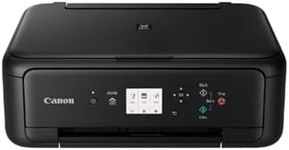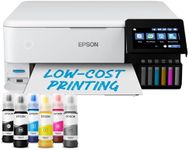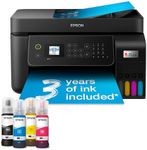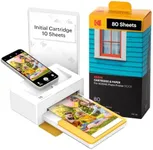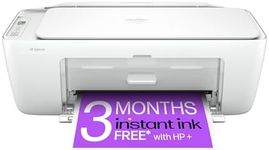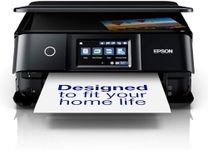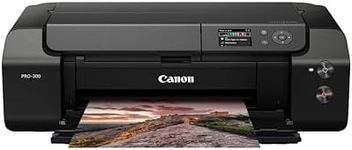Buying Guide for the Best Photo Printers
Choosing the right photo printer can be a daunting task, but with a little guidance, you can find the perfect model to suit your needs. Photo printers are designed to produce high-quality prints of your favorite images, and there are several key specifications to consider when making your decision. Understanding these specs will help you navigate the options and select a printer that meets your requirements for quality, speed, and functionality.Print ResolutionPrint resolution refers to the number of dots per inch (DPI) that a printer can produce. Higher DPI means more detail and sharper images. For photo printing, a resolution of at least 1200 DPI is recommended for good quality prints, while professional-grade printers may offer resolutions of 2400 DPI or higher. If you plan to print large photos or need the highest possible quality, opt for a printer with a higher DPI.
Ink TypesPhoto printers typically use either dye-based or pigment-based inks. Dye-based inks are known for their vibrant colors and are ideal for printing photos with rich, saturated hues. Pigment-based inks, on the other hand, offer better longevity and resistance to fading, making them suitable for archival prints. Consider what is more important for your needs: vibrant colors or long-lasting prints.
Print SpeedPrint speed is measured in pages per minute (PPM) and indicates how quickly a printer can produce prints. While speed may not be the most critical factor for occasional photo printing, it becomes important if you need to print large volumes of photos quickly. Entry-level photo printers may have slower speeds, while higher-end models can print more rapidly. Assess your printing frequency and volume to determine the appropriate print speed for your needs.
Connectivity OptionsModern photo printers offer various connectivity options, including USB, Wi-Fi, Bluetooth, and memory card slots. Wi-Fi and Bluetooth enable wireless printing from your computer, smartphone, or tablet, providing convenience and flexibility. Memory card slots allow direct printing from your camera's memory card. Choose a printer with connectivity options that match your preferred method of transferring and printing photos.
Paper HandlingPaper handling refers to the types and sizes of paper a printer can accommodate. Photo printers should support various photo paper sizes, such as 4x6, 5x7, and 8x10 inches, as well as different paper types like glossy, matte, and specialty papers. If you plan to print a variety of photo sizes or use different paper types, ensure the printer can handle your specific requirements.
Color AccuracyColor accuracy is crucial for photo printing, as it determines how true-to-life your prints will appear. Some printers offer advanced color management features and use multiple ink cartridges to achieve a wider color gamut. If precise color reproduction is important for your photography, look for printers with high color accuracy and advanced color management capabilities.
Printer Size and PortabilityThe size and portability of a photo printer can be important depending on your space and mobility needs. Compact printers are ideal for small spaces or for taking on the go, while larger printers may offer more features and better print quality. Consider where you will be using the printer and whether portability is a factor in your decision.


